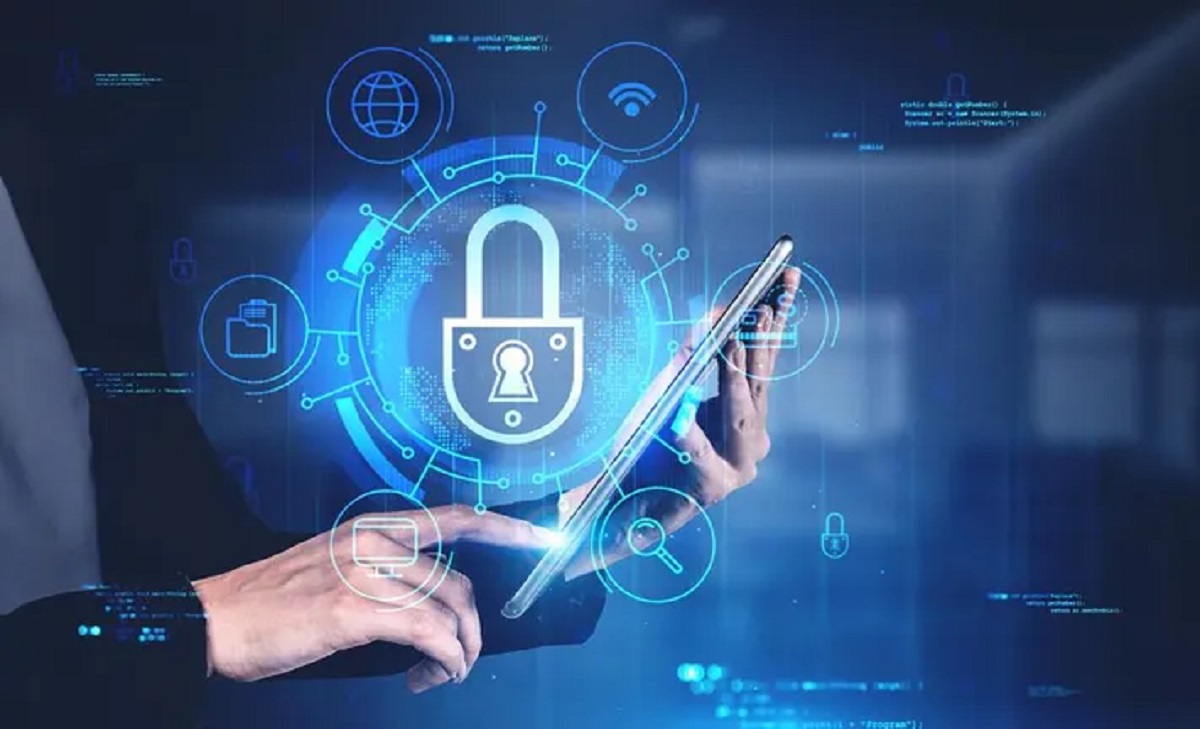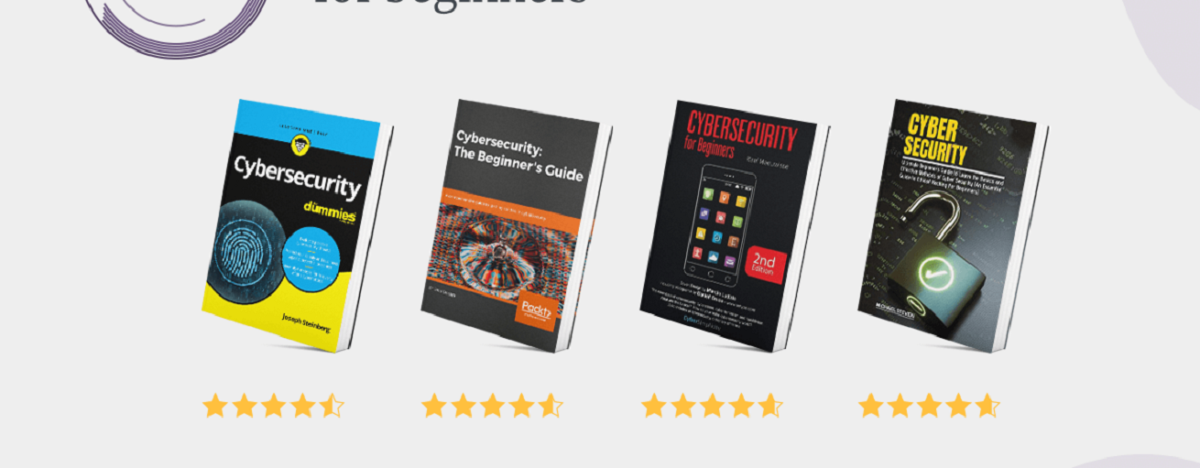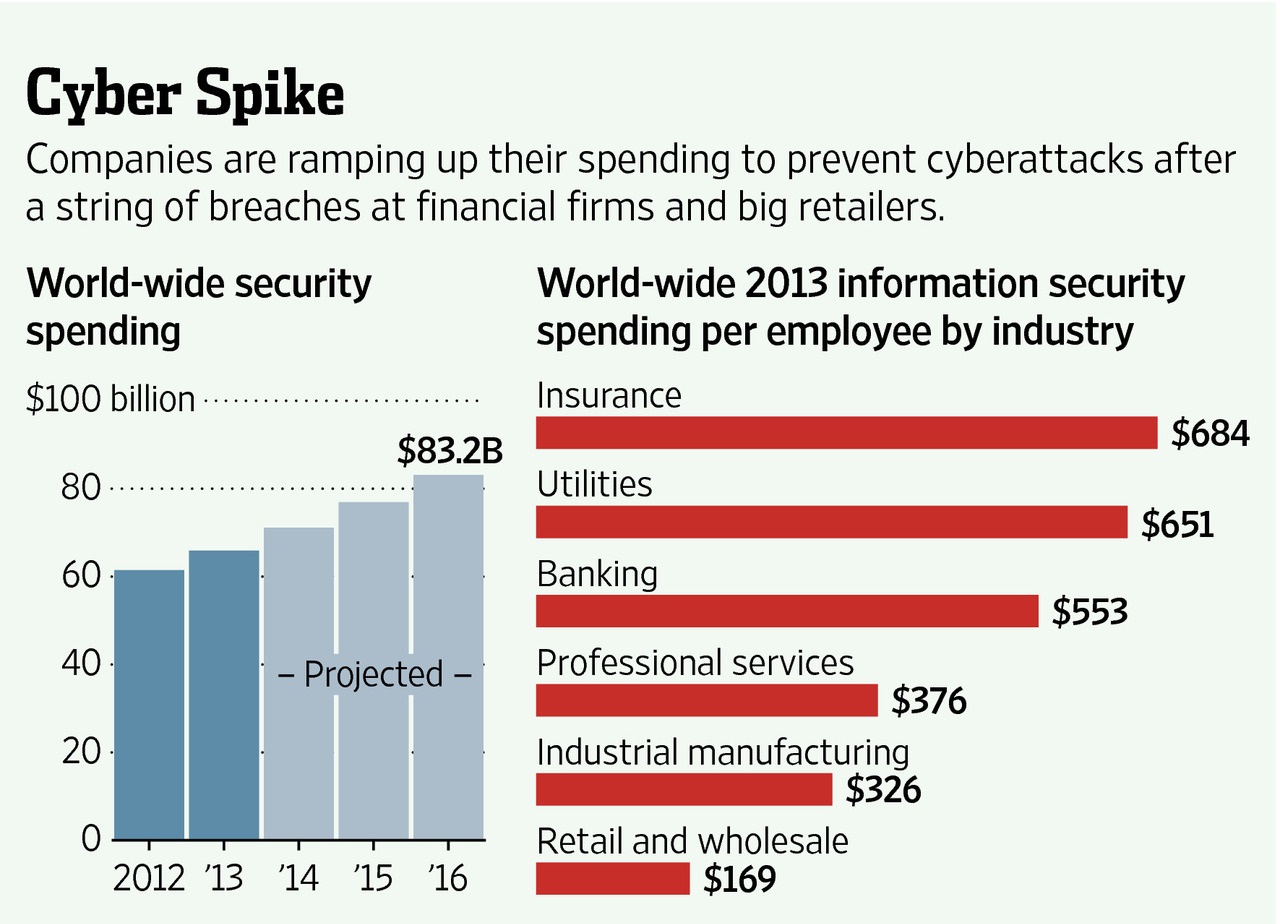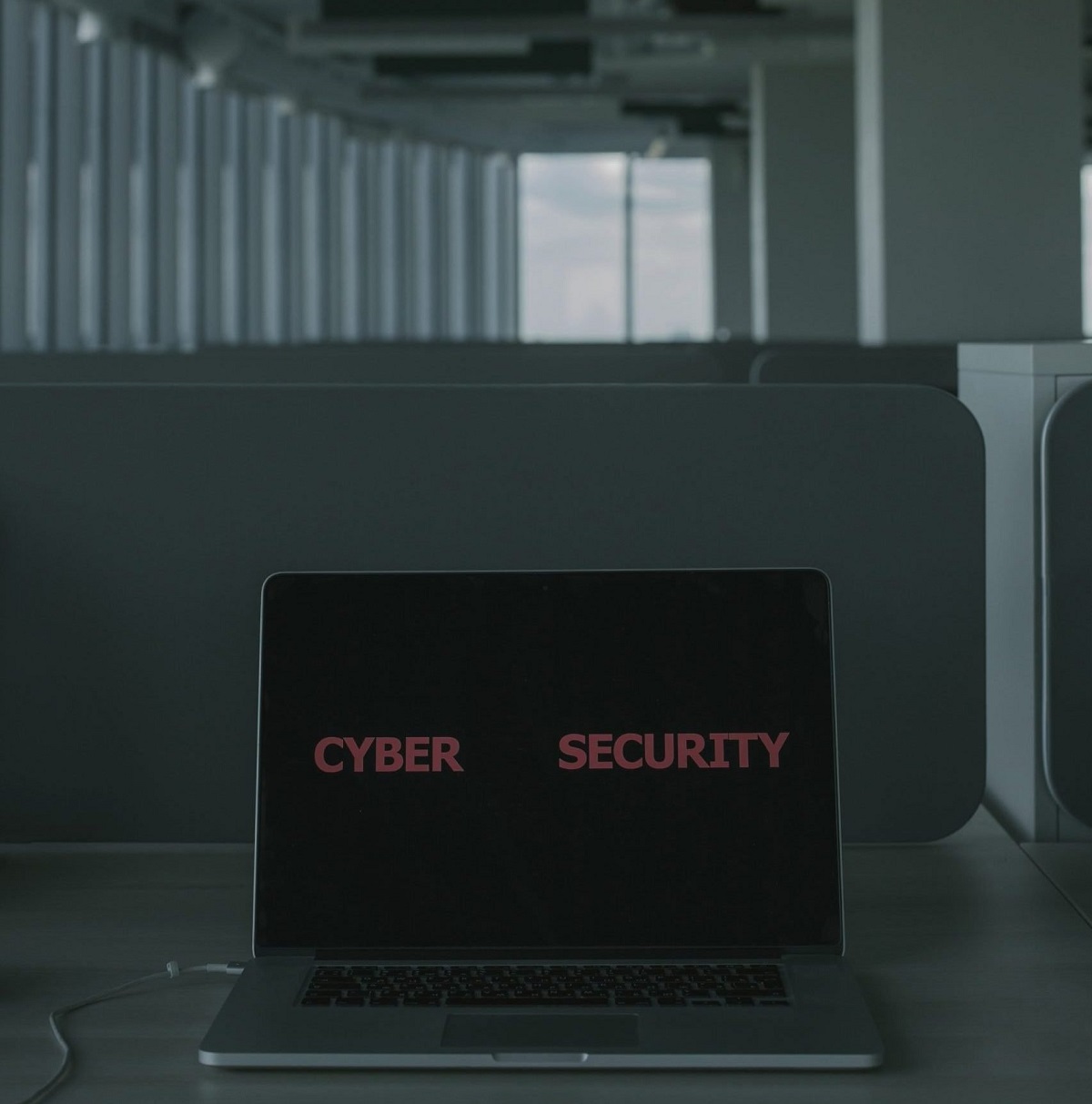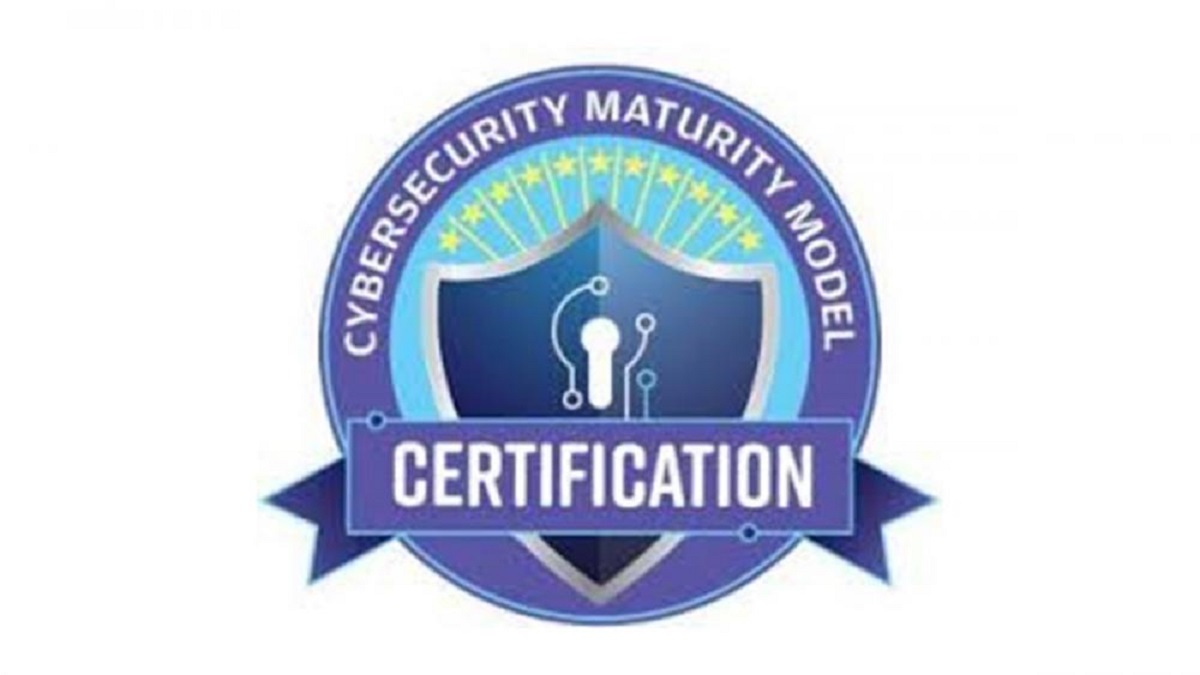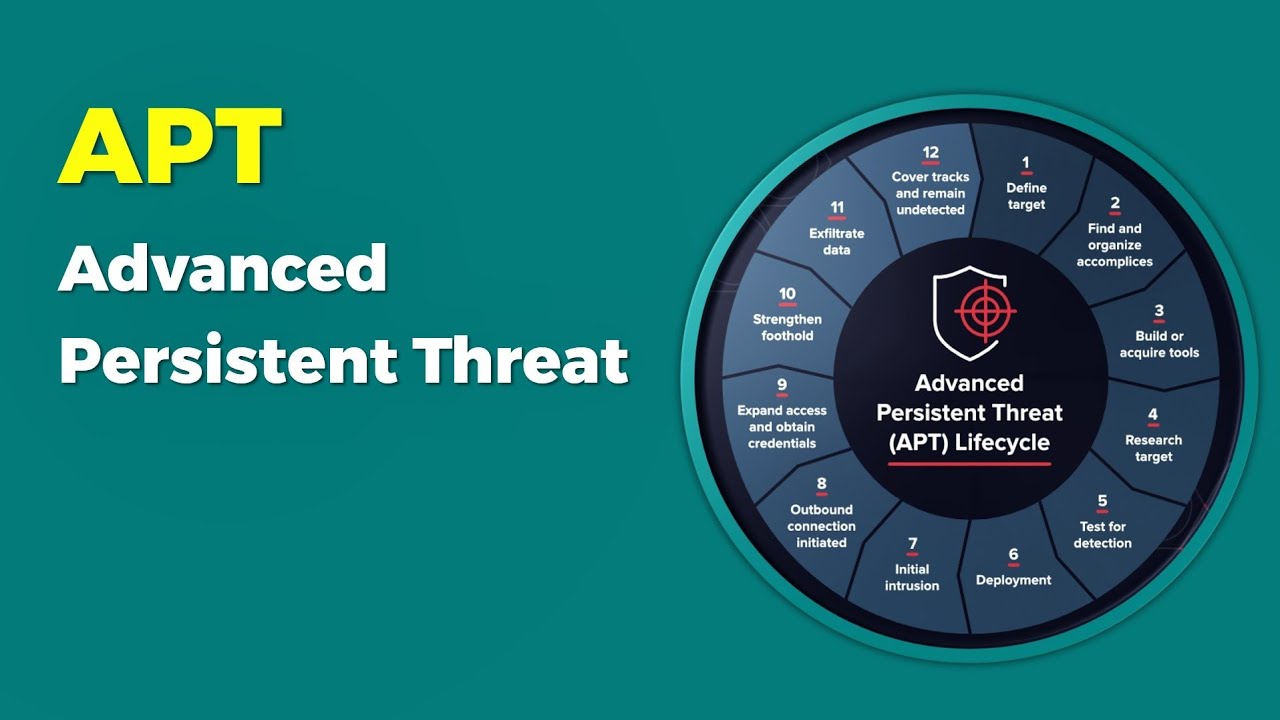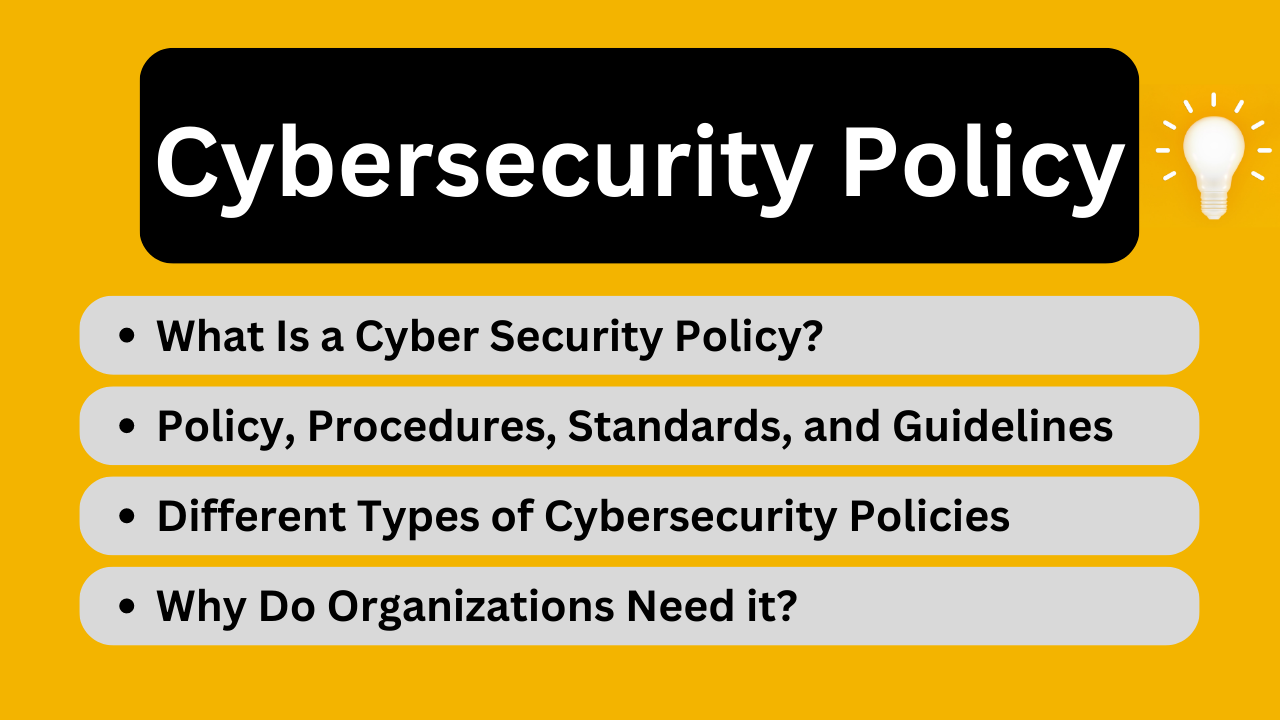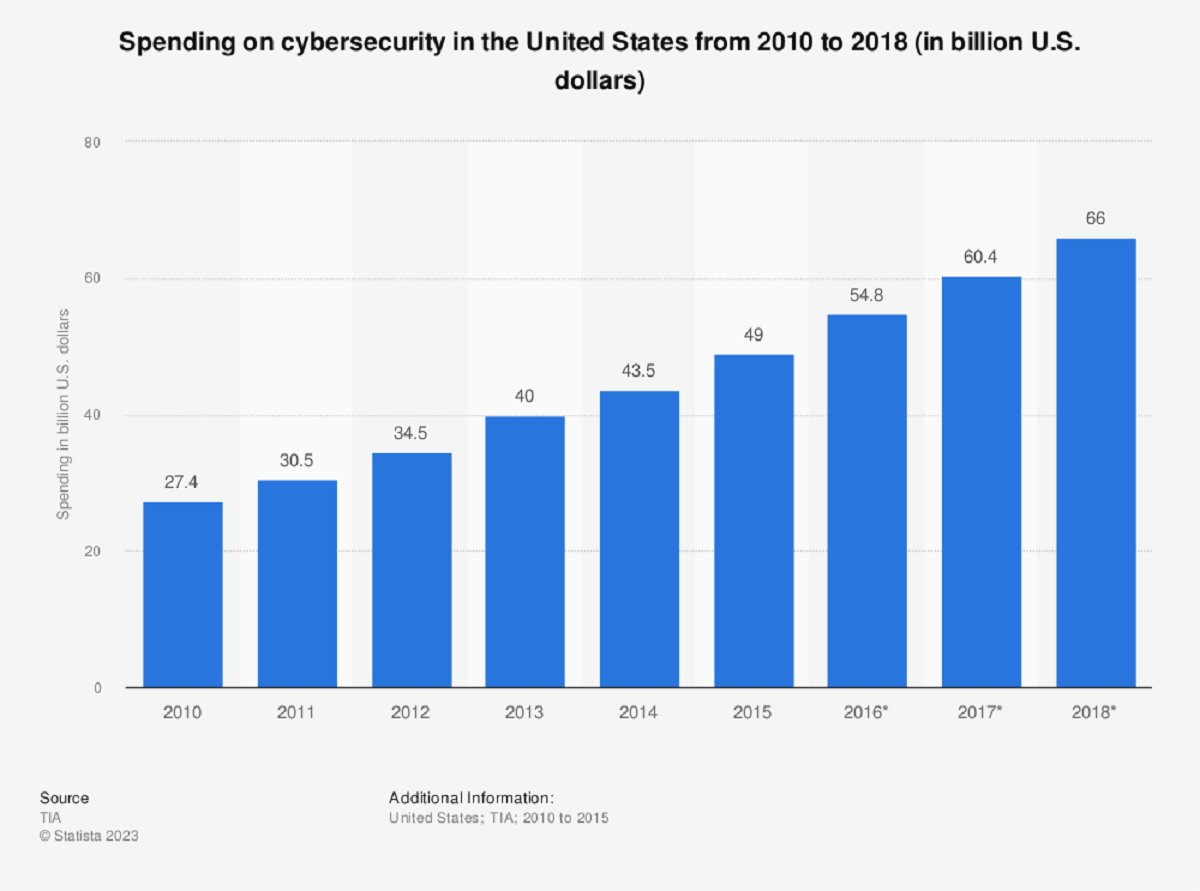Introduction
Welcome to the world of cybersecurity, where organizations strive to protect their digital assets from various threats and malicious activities. In this interconnected digital age, where data breaches and cyber attacks are becoming increasingly common, it has become crucial for organizations to implement effective security measures.
One such important aspect of cybersecurity is the concept of controls. Controls play a vital role in safeguarding an organization’s information systems and ensuring the confidentiality, integrity, and availability of data. They act as the gatekeepers, monitoring and governing the access, usage, and protection of sensitive information.
Controls in cybersecurity refer to a set of measures, policies, procedures, and technologies implemented to minimize vulnerabilities and mitigate risks. These controls aim to establish a secure environment, prevent unauthorized access, detect and respond to security incidents, and ensure compliance with regulatory requirements.
By implementing controls, organizations can create a robust and resilient cybersecurity framework. It helps in identifying potential threats, managing risks, and maintaining the overall security posture of the organization. With the ever-evolving cyber threat landscape, controls need to adapt and evolve to counter emerging risks and vulnerabilities.
This article explores the importance of controls in cybersecurity, the different types of controls, examples of commonly used controls, challenges in implementing controls, and the benefits of having effective controls in place.
Definition of Control in Cybersecurity
In the realm of cybersecurity, a control can be defined as a specific measure or mechanism implemented to minimize risks and vulnerabilities and ensure the protection of sensitive information and systems. Controls act as a safeguard, helping organizations prevent, detect, and respond to cyber threats.
Controls can be categorized into various types, including technical controls, administrative controls, and physical controls, each playing a distinct role in securing an organization’s digital assets.
Technical controls involve the implementation of technological measures to protect networks, systems, and data. These controls comprise firewalls, antivirus software, intrusion detection systems, encryption mechanisms, and access controls. They are designed to prevent unauthorized access, detect and respond to security incidents, and ensure the integrity of data.
Administrative controls, on the other hand, focus on the policies, procedures, and practices implemented by an organization to govern its cybersecurity operations. These controls encompass employee training and awareness programs, security policies and guidelines, incident response plans, and access management protocols. They aim to establish a strong security culture within an organization, ensuring that employees follow best practices and adhere to security guidelines.
Physical controls refer to the measures implemented to protect physical infrastructure and assets. These controls include the use of surveillance systems, access control systems, secure entry points, and environmental controls like fire suppression systems. Physical controls are essential in preventing unauthorized physical access to critical systems or data centers.
Overall, the primary goal of controls in cybersecurity is to reduce the risk of security breaches, ensure the confidentiality, integrity, and availability of data, and comply with industry regulations and standards. They provide organizations with a structured approach to manage cyber threats and protect their critical assets from unauthorized access or tampering.
Importance of Controls in Cybersecurity
The importance of controls in cybersecurity cannot be overstated. In today’s interconnected digital landscape, where cyber threats are growing in sophistication and frequency, implementing effective controls is essential for organizations to protect their sensitive information and maintain operational continuity. Here are some key reasons why controls are crucial in cybersecurity:
1. Risk Mitigation: Controls help mitigate risks associated with cyber threats by implementing preventive measures, detecting vulnerabilities, and responding to security incidents. By identifying and addressing vulnerabilities proactively, controls ensure that the organization is well-prepared to handle potential threats.
2. Data Protection: Controls safeguard the confidentiality, integrity, and availability of data. Through access controls, encryption mechanisms, and secure data storage practices, controls ensure that sensitive information remains protected from unauthorized access, unauthorized modifications, and data breaches.
3. Compliance with Regulations: Controls play a crucial role in ensuring compliance with industry regulations, standards, and legal requirements. They help organizations meet the guidelines set by regulatory bodies, such as the General Data Protection Regulation (GDPR) or the Health Insurance Portability and Accountability Act (HIPAA), and avoid penalties or legal consequences.
4. Business Continuity: Implementing controls enhances an organization’s ability to prevent and respond to security incidents. By identifying potential risks and implementing appropriate controls, organizations can minimize the impact of cyber attacks, reduce downtime, and maintain operational continuity.
5. Reputation Management: A successful cyber attack can have severe repercussions on an organization’s reputation. Controls help safeguard an organization’s reputation by preventing data breaches, demonstrating a commitment to cybersecurity, and instilling trust among customers, partners, and stakeholders.
6. Prevention of Financial Loss: Cybersecurity incidents can result in significant financial losses due to regulatory fines, legal claims, lost business opportunities, and remediation efforts. Controls lessen the likelihood of such incidents, reducing financial risks associated with cyber threats.
7. Enhanced Employee Awareness: Controls increase employee awareness about cybersecurity best practices and the importance of adhering to security guidelines. Training programs, policies, and procedures associated with controls create a security-conscious culture within the organization.
In summary, controls are of utmost importance in cybersecurity as they mitigate risks, protect data, ensure compliance, maintain business continuity, preserve reputation, prevent financial losses, and foster a culture of security awareness within organizations. By implementing effective controls, organizations can safeguard their digital assets and minimize the impact of cyber threats.
Types of Controls
In the realm of cybersecurity, there are three main types of controls: technical controls, administrative controls, and physical controls. Each type of control serves a unique purpose in protecting an organization’s digital assets. Let’s explore these types in more detail:
1. Technical Controls: Technical controls involve the use of technology to protect networks, systems, and data. These controls focus on preventing unauthorized access, detecting and responding to security incidents, and ensuring the integrity and confidentiality of data. Examples of technical controls include:
- Firewalls: Network security devices that monitor and control incoming and outgoing network traffic.
- Intrusion Detection Systems (IDS) and Intrusion Prevention Systems (IPS): Software or hardware-based solutions that detect and prevent unauthorized access or suspicious activities within a network.
- Encryption: The process of encoding data to prevent unauthorized access or data tampering.
- Access Controls: Authentication mechanisms such as passwords, biometrics, or multi-factor authentication to control access to systems and data.
- Antivirus and Anti-malware Software: Tools that detect, prevent, and remove malicious software.
2. Administrative Controls: Administrative controls focus on the policies, procedures, and practices implemented by an organization to manage its cybersecurity operations. These controls establish guidelines and best practices for employees to follow, ensuring the implementation of security measures. Examples of administrative controls include:
- Security Policies and Procedures: Establishing guidelines and protocols for employees to adhere to regarding the handling of sensitive data and the use of IT resources.
- Employee Training and Awareness Programs: Educating employees about cybersecurity risks, best practices, and their role in maintaining a secure environment.
- Incident Response Plans: Outlining the steps to be taken in the event of a security incident, including reporting incidents, assessing impact, and mitigating risks.
- Access Management: Defining roles and responsibilities, granting appropriate access privileges, and implementing procedures for managing user accounts.
- Regular Security Audits and Assessments: Conducting periodic reviews of security controls to identify gaps and ensure adherence to compliance standards.
3. Physical Controls: Physical controls focus on protecting the physical infrastructure and assets of an organization. These controls aim to prevent unauthorized physical access to sensitive areas and protect critical systems in data centers. Examples of physical controls include:
- Surveillance Systems: CCTV cameras and monitoring devices to deter and detect unauthorized access to physical premises.
- Access Control Systems: Swipe cards, biometric authentication, or key-based systems to control entry to restricted areas.
- Environmental Controls: Fire suppression systems, temperature control mechanisms, and humidity control to prevent damage to critical systems.
- Secure Storage Solutions: Safes, cabinets, or locked rooms to store physical documents or devices containing sensitive information.
- Backup and Disaster Recovery Plans: Strategies and infrastructure in place to protect and recover data in the event of a physical disaster or breach.
By implementing a combination of technical, administrative, and physical controls, organizations can establish a comprehensive cybersecurity framework that addresses vulnerabilities from various angles and helps protect their valuable digital assets.
Technical Controls
Technical controls are a crucial component of cybersecurity, aiming to protect networks, systems, and data from unauthorized access and malicious activities. These controls rely on technology and software to monitor, detect, and respond to cybersecurity threats. By implementing technical controls, organizations can establish a strong defensive barrier against potential attacks. Here are some common examples of technical controls:
- Firewalls: Firewalls are network security devices that monitor and control incoming and outgoing network traffic. They act as a barrier between the internal network and external entities, filtering traffic based on predefined rules, and preventing unauthorized access.
- Intrusion Detection Systems (IDS) and Intrusion Prevention Systems (IPS): IDS and IPS are software or hardware-based solutions that monitor network traffic and detect any signs of suspicious or malicious activities. IDS identifies potential threats, while IPS takes immediate action to prevent or block these threats from affecting the network.
- Encryption: Encryption is the process of converting data into an unreadable format, known as ciphertext, to protect it from unauthorized access. Encrypted data can only be decrypted with the appropriate decryption key, ensuring the confidentiality and integrity of sensitive information.
- Access Controls: Access controls are mechanisms that authenticate and authorize users, allowing them to access only the resources and data they are authorized to use. This includes techniques such as passwords, biometrics, multi-factor authentication, and role-based access control (RBAC).
- Antivirus and Anti-malware Software: Antivirus and anti-malware software are essential for detecting, preventing, and removing malicious programs, such as viruses, worms, Trojans, and ransomware, from systems. These software solutions scan files, emails, and websites for known patterns or behaviors associated with malware.
Other technical controls include:
- Intrusion Prevention Systems (IPS): IPS works in conjunction with IDS to detect and prevent malicious activities by blocking or mitigating attacks.
- Vulnerability Scanners: Vulnerability scanners help identify security weaknesses and vulnerabilities within a system or network, allowing organizations to address them before they can be exploited by attackers.
- Secure Configuration: Implementing secure configurations involves configuring hardware devices, software applications, and operating systems in a secure manner, following industry best practices and recommended guidelines.
- Patch Management: Regularly updating software applications and systems with the latest patches and security updates helps protect against known vulnerabilities and reduces the risk of exploitation.
- Logging and Monitoring: Logging and monitoring mechanisms track and record events and activities within the network or system. They provide valuable information for incident response and forensic analysis.
By implementing a combination of these technical controls, organizations strengthen their defenses against cyber threats, reduce the risk of successful attacks, and enhance the overall security posture of their digital infrastructure.
Administrative Controls
Administrative controls, also known as procedural controls, are an essential aspect of cybersecurity that focuses on establishing policies, procedures, and practices to govern an organization’s security operations. These controls help create a secure environment, ensure compliance with regulations, and promote a culture of cybersecurity awareness within the organization. Here are some examples of administrative controls:
- Security Policies and Procedures: Security policies outline the organization’s expectations, guidelines, and rules regarding security practices. Procedures provide step-by-step instructions on how to implement security measures, handle incidents, and ensure compliance. These documents are vital for establishing and communicating security standards to employees.
- Employee Training and Awareness Programs: Organizations need to invest in ongoing training and awareness programs to educate employees about cybersecurity risks, best practices, and their roles and responsibilities in maintaining a secure environment. Regular training sessions and awareness campaigns help mitigate the human factor in cybersecurity incidents.
- Incident Response Plans: Incident response plans outline the steps to be taken in the event of a cybersecurity incident, such as a data breach or a malware attack. These plans include predefined roles and responsibilities for incident response team members, communication channels, and escalation procedures to ensure a prompt and coordinated response.
- Access Management: Access management involves defining and maintaining user roles, privileges, and permissions within the organization. Implementing access controls and managing user accounts minimize the risk of unauthorized access or data breaches by ensuring that users have appropriate levels of access to resources and information.
- Security Awareness and Acceptable Use Policies: Organizations should establish policies that clearly define acceptable use rules for company assets, such as computers, internet, email, and social media. These policies help employees understand their responsibilities and obligations, reducing the likelihood of unintentional security incidents caused by misuse or negligence.
Other administrative controls include:
- Change Management: Change management processes ensure that any changes or updates to systems, applications, or configurations are thoroughly tested, documented, and approved before implementation. This helps minimize the risk of introducing vulnerabilities or disrupting critical systems.
- Security Audits and Assessments: Regular security audits and assessments evaluate the effectiveness of security controls, identify potential gaps or vulnerabilities, and ensure compliance with industry regulations and standards. These assessments help organizations identify areas for improvement and make informed decisions regarding cybersecurity investments.
- Third-party Risk Management: Organizations should establish procedures to assess and manage the cybersecurity risks associated with third-party vendors or partners. This includes conducting due diligence, performing security assessments, and incorporating contractual requirements to ensure third-party compliance with security standards.
- Security Incident Reporting and Response: Encouraging a culture of reporting security incidents without fear of retribution is crucial. Employees should be aware of the proper channels for reporting incidents promptly. Organizations should establish a clear incident response process to investigate, contain, and remediate any security breaches.
By implementing appropriate administrative controls, organizations can establish a strong foundation for cybersecurity. These controls establish guidelines, train employees, ensure compliance, manage risks, and foster a security-conscious culture within the organization.
Physical Controls
Physical controls are a crucial aspect of cybersecurity that focus on safeguarding the physical infrastructure and assets of an organization. These controls aim to prevent unauthorized physical access to sensitive areas, protect critical systems, and enhance the overall security posture. Here are some examples of physical controls:
- Surveillance Systems: CCTV cameras and monitoring devices are used to deter and detect unauthorized access to physical premises. Surveillance systems provide visual evidence of any suspicious activities or security breaches, aiding in investigation and forensic analysis.
- Access Control Systems: Access control systems are mechanisms used to control entry into restricted areas. These systems can leverage various methods such as swipe cards, biometric authentication (e.g., fingerprints or facial recognition), or key-based systems to verify and grant access to authorized individuals.
- Environmental Controls: Environmental controls are measures put in place to maintain the optimum physical conditions required for the secure operation of critical systems. This includes fire suppression systems, temperature control mechanisms, humidity control, and adequate ventilation to prevent hardware damage and ensure system availability.
- Secure Storage Solutions: Secure storage solutions such as safes, locked cabinets, or locked rooms are used to protect physical documents, backup media, or devices containing sensitive information. These storage solutions reduce the risk of unauthorized access or theft of critical data assets.
- Visitor Management: Visitor management systems help control and monitor the access of non-employees to secure areas. These systems require visitors to register, provide identification, and receive temporary access credentials or visitor badges to ensure that only authorized visitors are granted entry.
Other physical controls include:
- Perimeter Security: Perimeter security measures establish physical barriers or boundary protection around an organization’s premises. This can include fences, gates, barriers, or security personnel to deter unauthorized access.
- Video Surveillance: Video surveillance systems capture and record video footage, allowing for post-event analysis and evidence gathering. These systems are strategically placed to monitor critical areas and identify any security incidents or breaches.
- Asset Management: Asset management processes track and manage the physical inventory of devices and equipment within an organization. Proactive management helps prevent loss or theft of physical assets that may contain sensitive information.
- Backup and Data Recovery: Physical controls ensure that backup copies of data are stored in secure locations away from the primary site. This minimizes the risk of data loss due to physical disasters, theft, or intentional damage.
- Secure Disposal: Physical controls ensure that sensitive data stored on physical media, such as hard drives or backup tapes, is securely erased or destroyed when no longer needed. This prevents unauthorized access or retrieval of sensitive information.
Physical controls play a crucial role in maintaining the overall security of an organization. By implementing these controls, organizations can prevent unauthorized physical access, protect critical systems and data, and mitigate risks associated with physical threats to their cybersecurity.
Examples of Controls in Cybersecurity
Controls in cybersecurity encompass a wide range of measures, policies, and technologies that organizations implement to protect their digital assets from various threats. Here are some examples of commonly used controls:
- Firewalls: Firewalls are a fundamental network security control that filters incoming and outgoing network traffic based on predefined rules, preventing unauthorized access and blocking potentially harmful traffic.
- Intrusion Detection Systems (IDS): IDS monitor network traffic and system activities to detect and alert IT administrators of any suspicious or malicious behavior. This helps organizations quickly identify potential security breaches.
- Encryption: Encryption is the process of transforming data into a format that can only be read with a decryption key. It is used to protect sensitive information from unauthorized access, ensuring its confidentiality and integrity.
- Access Controls: Access controls determine who can access specific resources, systems, or data within an organization. They include methods such as passwords, biometrics, and multi-factor authentication to verify and authorize user access.
- Antivirus Software: Antivirus software scans for, detects, and removes malicious software (such as viruses, trojans, and worms) from systems, preventing them from causing damage or compromising sensitive data.
- Secure Code Development: Secure code development practices include implementing secure coding standards and conducting code reviews to identify and fix vulnerabilities during the software development lifecycle.
- Backup and Recovery: Regular data backups and recovery measures ensure that critical data can be restored in the event of data loss or system failure, minimizing the impact of such incidents.
- Data Loss Prevention (DLP): DLP tools monitor and prevent unauthorized transmission or storage of sensitive data, helping organizations maintain control over their critical information.
- Security Incident Response: Incident response plans define the steps to be taken in the event of a security incident. These plans outline how to respond, contain, and recover from security breaches, minimizing the impact on the organization.
- Employee Awareness and Training: Training employees on cybersecurity best practices, such as identifying phishing emails and implementing strong password hygiene, helps create a security-conscious culture and reduces the risk of human error.
These examples represent just a small portion of the various controls organizations can use to defend their systems and data against cyber threats. The selection and implementation of controls should be tailored to an organization’s specific needs, risk profile, and regulatory requirements.
Implementing Controls in an Organization
Implementing controls in an organization is a critical process to enhance cybersecurity and protect sensitive information. It involves a systematic approach to identify, select, and deploy appropriate controls based on the organization’s specific needs and risk landscape. Here are the key steps to effectively implement controls in an organization:
1. Identify Risks and Requirements: Start by conducting a thorough risk assessment to identify potential vulnerabilities, threats, and compliance requirements specific to your organization. This step helps prioritize the selection and implementation of controls that address the most significant risks.
2. Develop a Control Framework: Establish a control framework that defines the set of controls to be implemented based on the identified risks and requirements. This framework may involve a combination of technical, administrative, and physical controls, considering the organization’s size, industry, and regulatory environment.
3. Select Appropriate Controls: Based on the control framework, carefully select controls that are relevant to your organization’s needs. Consider factors such as cost, effectiveness, impact on business operations, and compatibility with existing systems and processes.
4. Develop Policies and Procedures: Document clear policies and procedures that outline how the controls will be implemented and maintained within the organization. Policies should define roles and responsibilities, acceptable use guidelines, incident response protocols, and other relevant security practices.
5. Training and Awareness: Educate employees on the importance of the selected controls and provide training programs that help them understand and adhere to the established policies and procedures. Promote a culture of cybersecurity awareness and encourage reporting of security incidents or concerns.
6. Implementation: Deploy the selected controls and integrate them into existing systems and processes. This may involve configuring firewalls, installing antivirus software, conducting encryption, or implementing access controls across the organization.
7. Regular Monitoring and Maintenance: Continuously monitor the effectiveness of implemented controls to ensure they are functioning as intended. Regularly review and update policies and procedures to accommodate changes in the threat landscape, regulatory requirements, or technology advancements.
8. Incident Response and Documentation: Establish an incident response plan and procedures for timely detection, investigation, and response to security incidents. Document and learn from incidents to improve future security measures and prevent similar incidents from occurring.
9. Periodic Assessments and Audits: Conduct regular assessments and audits to evaluate the effectiveness of controls, identify gaps or vulnerabilities, and ensure compliance with industry standards and regulations. Implement corrective actions to address any identified weaknesses.
The implementation of controls is an ongoing process that requires collaboration between IT teams, security professionals, management, and employees. It is crucial to regularly review and update the control framework to adapt to changing risks and ensure the organization’s cybersecurity posture remains robust.
Challenges in Implementing Controls
Implementing controls in an organization can be a complex and challenging process. While controls are essential for cybersecurity, several common challenges can arise during their implementation. It’s important to anticipate and address these challenges to ensure successful deployment and maintenance of controls. Here are some common challenges:
1. Resource Constraints: Limited budgets, lack of skilled personnel, and inadequate infrastructure can hinder the implementation of controls. Organizations may face challenges in acquiring the necessary resources to invest in appropriate technologies, training, and personnel to effectively implement and manage the controls.
2. Complexity and Integration: Implementing controls across complex and interconnected systems can be challenging. Integrating controls seamlessly into existing IT infrastructure, without disrupting normal operations, requires careful planning, coordination, and testing.
3. Lack of Awareness and Training: Employees may be unaware of the importance of controls or lack the necessary knowledge to adhere to security guidelines. Insufficient training and awareness programs can hamper the successful implementation of controls and increase the risk of human errors or non-compliance.
4. Resistance to Change: Resistance from employees or departments to adopt new security practices or controls can be a significant challenge. Resistance may stem from concerns about perceived increased complexity, impact on productivity, or changes to established workflows. Organizations must address these concerns by clearly communicating the benefits and the importance of controls.
5. Compliance and Regulatory Requirements: Meeting regulatory compliance requirements can present challenges, especially in highly regulated industries. Organizations may need to implement controls specific to regulatory mandates, which can involve additional costs and complexity to ensure adherence.
6. Continuous Monitoring and Maintenance: Controls must be regularly monitored, updated, and maintained to remain effective. Organizations may face challenges in allocating the necessary resources and time to continuously monitor controls, address vulnerabilities, and keep up with emerging threats.
7. Scalability: As organizations grow, their cybersecurity requirements evolve. Ensuring that controls can scale and adapt to changing needs can be a challenge. Controls implemented in smaller environments may not be sufficient to protect larger and more complex systems.
8. Third-party Dependency: Organizations may rely on third-party vendors or service providers for certain controls. Managing and ensuring the effectiveness of controls provided by external entities pose challenges, such as vendor assessment, contract negotiations, and regular monitoring to maintain the desired level of security.
9. Balancing Security and Performance: Controls can sometimes introduce additional overhead that affects system performance or user experience. Finding the right balance between security requirements and operational efficiency is a challenge that needs careful consideration during control implementation.
To overcome these challenges, organizations should develop a comprehensive plan, allocate sufficient resources, invest in employee training and awareness programs, collaborate with stakeholders, and continuously assess and adapt controls as part of an overall cybersecurity strategy.
Benefits of Having Effective Controls in Cybersecurity
Having effective controls in cybersecurity provides numerous benefits for organizations. These controls play a crucial role in safeguarding digital assets, mitigating risks, and ensuring the overall security of an organization’s information systems. Here are some key benefits of having effective controls in place:
1. Risk Mitigation: Controls help organizations proactively identify and address vulnerabilities, reducing the risk of security breaches and cyber attacks. By implementing effective controls, organizations can minimize the impact and likelihood of successful attacks, protecting their sensitive information and systems.
2. Protection of Sensitive Data: Controls ensure the confidentiality, integrity, and availability of sensitive data. By enforcing access controls, encryption, and secure storage practices, organizations can prevent unauthorized access, data breaches, and tampering, ensuring the protection of critical information.
3. Compliance with Regulations: Effective controls help organizations meet regulatory requirements and industry standards. By implementing controls that align with specific regulations, such as GDPR or HIPAA, organizations can avoid penalties and legal consequences, ensuring compliance and building trust with customers and partners.
4. Business Continuity: Controls contribute to maintaining business continuity during and after security incidents. By implementing controls, organizations can detect and respond to security breaches promptly, minimizing the impact on operations, reducing downtime, and ensuring the availability and reliability of critical systems.
5. Reputation Management: Effective controls help protect an organization’s reputation. By preventing data breaches and security incidents, organizations demonstrate their commitment to cybersecurity, instilling trust among customers, partners, and stakeholders. Protecting reputation is crucial for maintaining customer confidence and competitiveness.
6. Financial Loss Prevention: Cybersecurity incidents can result in significant financial losses. Effective controls help organizations prevent financial loss associated with data breaches, legal claims, regulatory fines, remediation efforts, and potential loss of business opportunities. The investment in controls often pays off by mitigating potential financial risks.
7. Enhanced Operational Efficiency: Controls contribute to improved operational efficiency. By protecting systems from cyber threats, organizations can operate smoothly without disruptions caused by security incidents, system downtime, or data loss. Effective controls ensure that employees can work in a secure environment, reducing the impact on productivity.
8. Proactive Risk Management: Controls enable organizations to take a proactive approach to risk management. By implementing controls tailored to their specific needs, organizations can identify and mitigate risks in a structured manner. Regular assessments and updates to controls help organizations stay ahead of emerging threats and vulnerabilities.
9. Competitive Advantage: Organizations with effective controls in place gain a competitive advantage. Demonstrating a strong commitment to cybersecurity and having robust controls can differentiate an organization from competitors, instilling confidence in customers and partners who prioritize security when choosing vendors or partners.
Overall, having effective controls in cybersecurity is essential for organizations to protect their digital assets, maintain compliance, ensure business continuity, and build trust with stakeholders. By implementing and maintaining controls, organizations can mitigate risks, reduce the likelihood of successful cyber attacks, and minimize the potential impact of security incidents.
Conclusion
In today’s interconnected digital landscape, implementing effective controls in cybersecurity is vital for organizations to protect their digital assets, mitigate risks, and ensure the confidentiality, integrity, and availability of sensitive information. Controls, ranging from technical controls like firewalls and encryption to administrative controls including policies and employee training, play a crucial role in safeguarding against cyber threats.
By implementing controls, organizations can proactively identify and address vulnerabilities, comply with industry regulations, and minimize the impact of security breaches. Controls also contribute to maintaining business continuity, protecting an organization’s reputation, preventing financial losses, and enabling operational efficiency.
However, implementing controls can come with challenges such as resource constraints, complexity, and resistance to change. It is important for organizations to address these challenges through proper planning, allocation of resources, employee training, and continuous monitoring and maintenance.
By having effective controls in place, organizations can take a proactive approach to risk management, differentiate themselves in their industry, and inspire trust among customers, partners, and stakeholders. The investment in controls is crucial to ensure a secure environment, minimize the likelihood of successful cyber attacks, and maintain the overall security posture of the organization.
In conclusion, controls provide the necessary framework to protect against cyber threats and create a strong foundation for cybersecurity within organizations. By implementing and maintaining a range of technical, administrative, and physical controls, organizations can build a resilient cybersecurity program that is adaptable to new threats, enhances data protection, and ensures the overall security and success of the organization.







